Is this the easiest trick in skateboarding?
Nollie BS Shove-it. As a skater, this trick feels really simple. But as a nerd, corrections: from an academic point of view, this trick is packed of questions.
Like, why are Nollie or Fakie Shove-its easier than pop shove-its or normal Shove-its? And why does the board leave the ground? Yes, It's just a matter of an inch or two but isn’t that weird considering the nose doesn't hit the ground?
This time, we will talk about Nollie BS Shove-its and the science behind it. Which is also leading to uncovering the secret behind the "phantom" tricks in skateboarding.
Summary
Push down the nose and the tail starts to lift up.
Pushing down the nose and not only can you spin the board, you can give your board potential energy to lift the entire board up, which, however is not strong enough to lift it entirely up into the air.
The law of inertia accelerates the upward momentum.
Even after pushing down the nose, your board stays on the ground while deviating its course sideways. As a result, the nose tries to stop the momentum of your board while it has energy to continue going forward. This lifts the entire board up.
The law of inertia helps the board spin more effectively, too.
With the nose partially trying to stop the movement of the board, its potential energy tries to maintain its original movement. This helps the board spin effectively by using the nose as a pivot point.
Simulation
Hit the icon to initiate 3d simulation.
Definition and premise
What is a Nollie backside Shove-it?
Nollie backside Shove-it is a trick that you spin your board 180 degrees with your front foot by pushing down the nose.
Once you get the feeling of getting back on your board, not only is this trick the easiest, but it also becomes a trick that consumes the least amount of energy.
Although you could pop if you want to, you don't have to to complete the 180 degrees rotation. All you need instead is a little bit of nudge on the nose. Then you get yourself a Nollie Shove-it which some people may call the "phantom" Shove-it.
Note
Perhaps that term should only be used when you don't pop the tail when you are supposed to like when you do low Treflips. Anyway, just for the sake of science, let's call a Shove-it in which I you don't hit the tail of your board a Phantom Shove-it this time.

What is a "Phantom" trick?
Just so you know, "phantom" tricks are referred to when you don't pop the tail or nose of your board, or even if you do, the amount of vertical force exerted is so small that either the tail or nose doesn't hit the ground. In this case, since I push down the nose and it actually goes down but it stops doing so before it reaches the ground.

Simulation
Why does the board lift up?
Somehow, the entire board lifts up without the nose hitting the ground.
Generally, we think we have to pop to bring our boards up into the air. But it seems like some sort of entirely different mechanics is working here.
A sort of mechanics that brings the board up without even requiring the bounce of the board. Isn't that science?
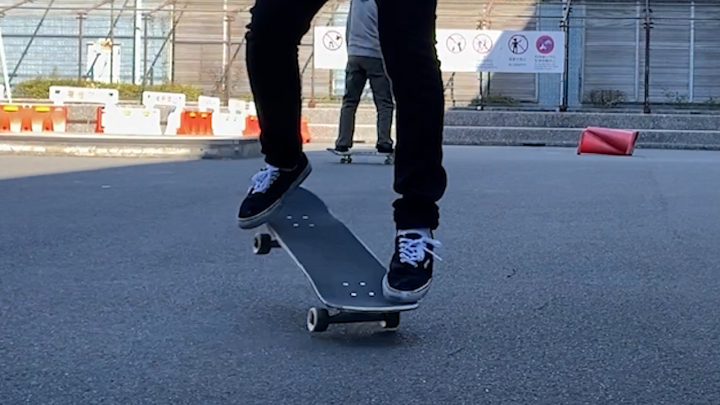
Simulation #1 The rocket test
*Please see this experiment in the video.
To understand this, let's try this simulation: Here we have a rocket and a box and they are connected by this chain.
When the rocket goes up it brings the box with it. Just like you can see, the box goes up without doing anything. It doesn't generate any energy, it simply is dragged by the rocket.
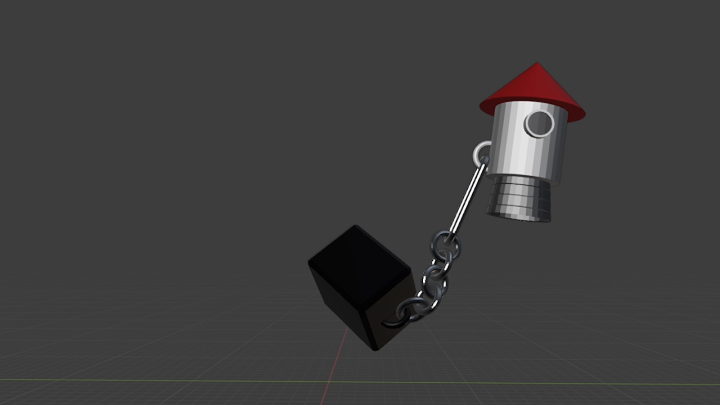
Simulation #2 The split board test
*Please see this experiment in the video.
How about this: if we try the same experiment with these pieces of boards, it's the same result.
The rear truck goes up without doing anything.
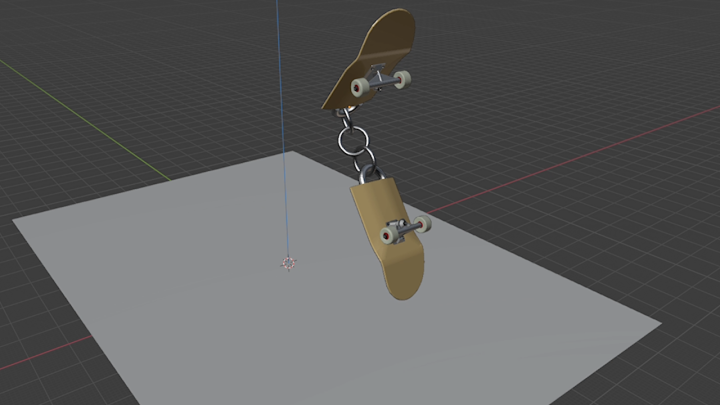
Application of the concept
Push down the nose and the tail gains upward momentum
Going back to the real world, the concept is the same: a moving object brings other parts with it.
Although a skateboard deck is a solid material and the simulation we just saw might not precisely apply to it, the same physics works here.
In Nollie BS Shove-its, as I push down the nose, the tail rises up. And it has potential energy to lift the entire board up without having to have the nose hit the ground.
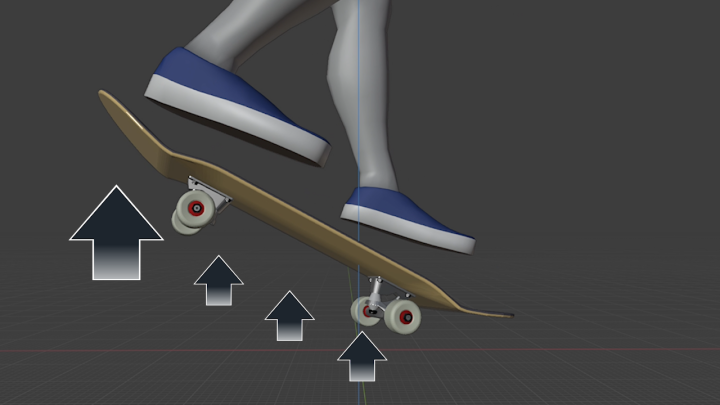
Everything's at the beginning
At this point, you may be thinking, "if that's the case, why does my board not go up when I push down the tail while standing still?"
Well, you are absolutely correct. The vertical momentum of the tail — that is generated by pushing down the nose — that alone is generally not strong enough to lift the entire board up into the air.
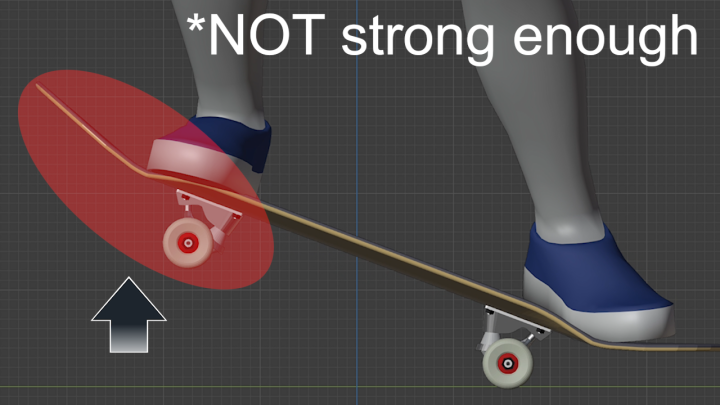
There needs to be another upward momentum
So although pushing down one side of the board may give the board energy to go up, it's not strong enough. And there needs to be something in addition to this.
In fact, the truth behind this can be answered by thinking about this question, "why are Shove-its easier in Nollie/Fakie?"
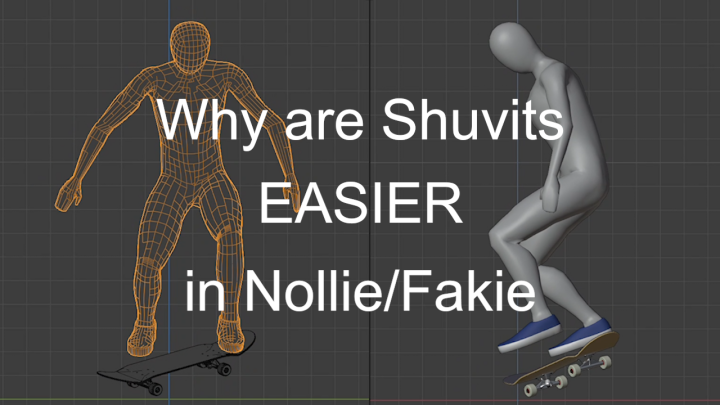
Why are Nollie/Fakie Shove-its easier?
Why does the board spin?
In my Nollie Shove-its, when I push down the nose, the tail of my board swings out from a direction in which my board is going to.
And it doesn't happen just because I push the nose to the toe side. In fact, there's something a lot more interesting happening here.
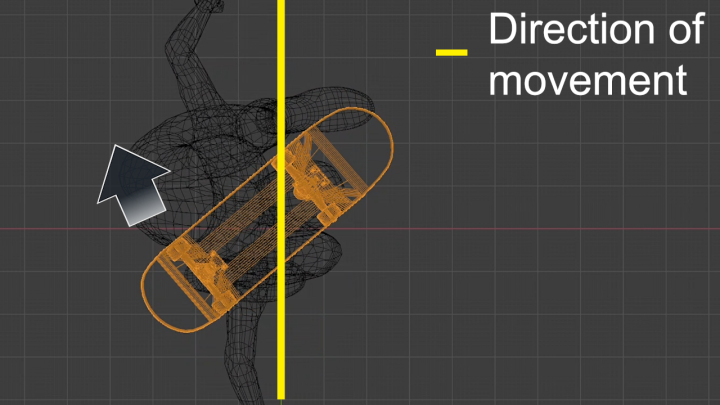
The front wheels try to stop the board
If you take a closer look at my front wheels, it's not like they instantly leave the ground right after popping. Instead you can see them kind of stick to the ground even after the tail starts to swing out. So they stay in contact with the ground for the shortest duration of time. But they don't just stay there still: they actually divert their direction sideways while staying on the ground.
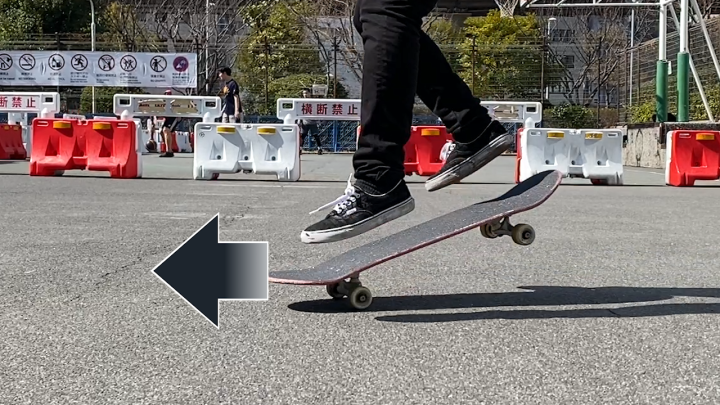
Where does the energy go?
However the rest of the board still has energy to go straight forward. With the front wheels sticking to the ground and blocking its movement, the only direction the rest of the board can disperse its potential energy to is along with the circumference of the pivot point. Yes, we are talking about the law of inertia. If you harness this concept, you don't even have to try to spin your board 180 degrees because physics does that anyways.
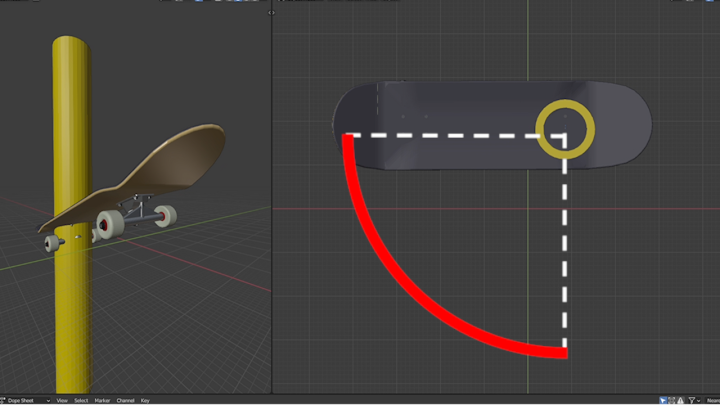
Another experiment
Car crush test
Let me put it this way: imagine there's a car going straight forward and a pole in front of it. The pole is not exactly in the center of its way and is slightly off to the side. As we can instinctively tell what happens, when the car hits the pole, it spins sideways.
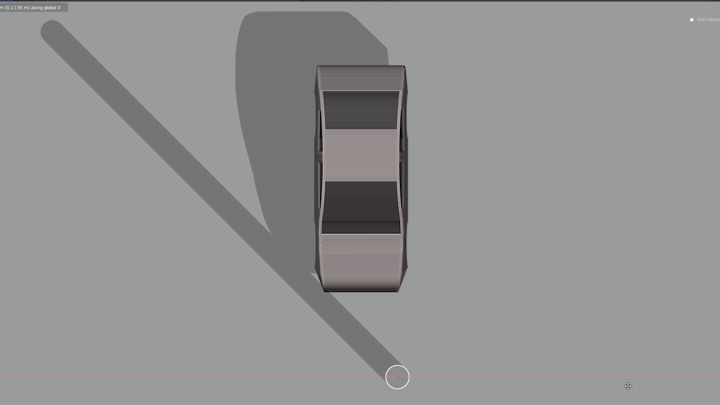
The energy needs to go somewhere
In addition to the horizontal spin, we also have to take into account that the car's rear part flips up. Upon impact, the car's front part stops but the center of gravity of this object still has energy to move forward and it NEEDS to go somewhere.
In other words, according to the law of inertia, it tries to maintain the direction of its original movement, while it simply can't with the poll blocking its way. So the force needs to find a way to move forward using the pivot point as a fulcrum, which, farther elevates the center of gravity of this object.
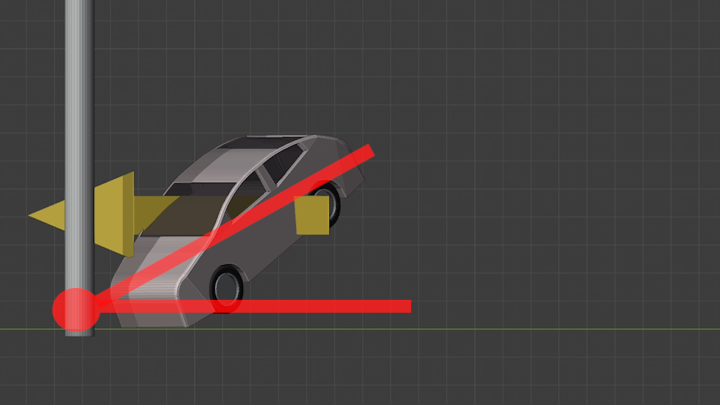
Summary
In summary, there are two types of upward momentum.
- The one that's generated by pushing down the nose.
- The one that's generated by the law of inertia.
When they are combined, they sum up and form enough energy to lift the entire board up.
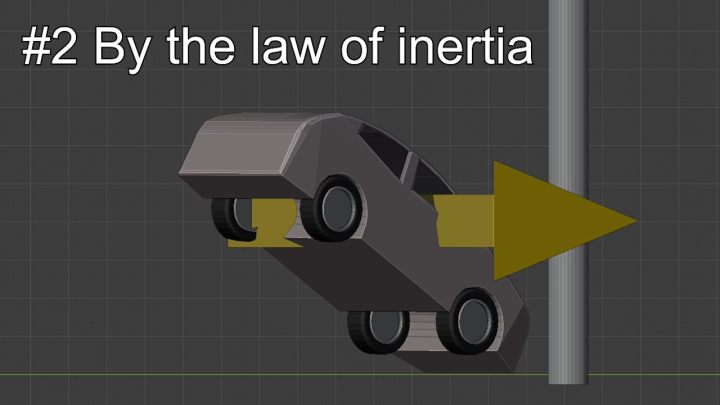
Comparison between normal/Nollie Shove-its
You can utilize the law of inertia in Nollie
Plus, if we go back to one of the first questions, the reason why some tricks are easier in Nollie or Fakie is because of the law of inertia.
In other words, in normal a Shove-it, a contact point between the board and the ground is on the rear side relative to the center of gravity of the skateboard, with which we can't utilize the law of inertia because the contact point doesn't either stop the movement of the board or function as a pivot point.
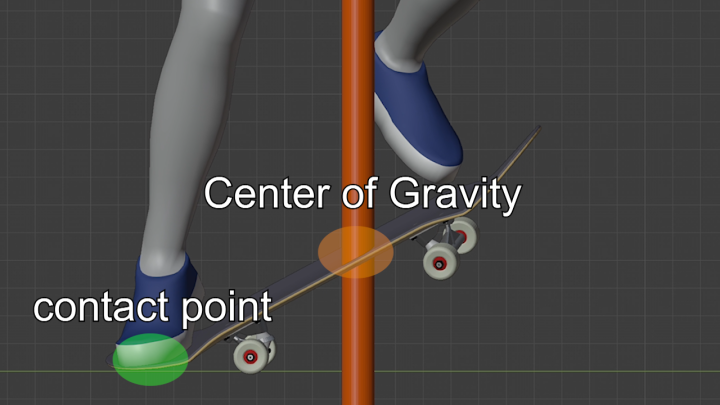
Tips
Let's study the trick further in detail.
Proceed from the links below.
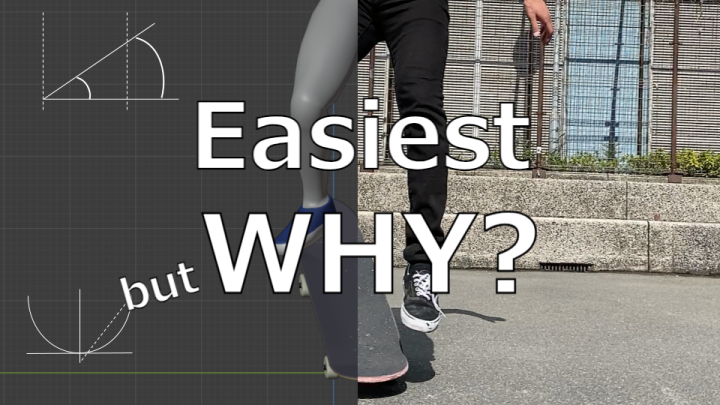


 Convert your video into 3D
Convert your video into 3D Facebook
Facebook Twitter
Twitter




